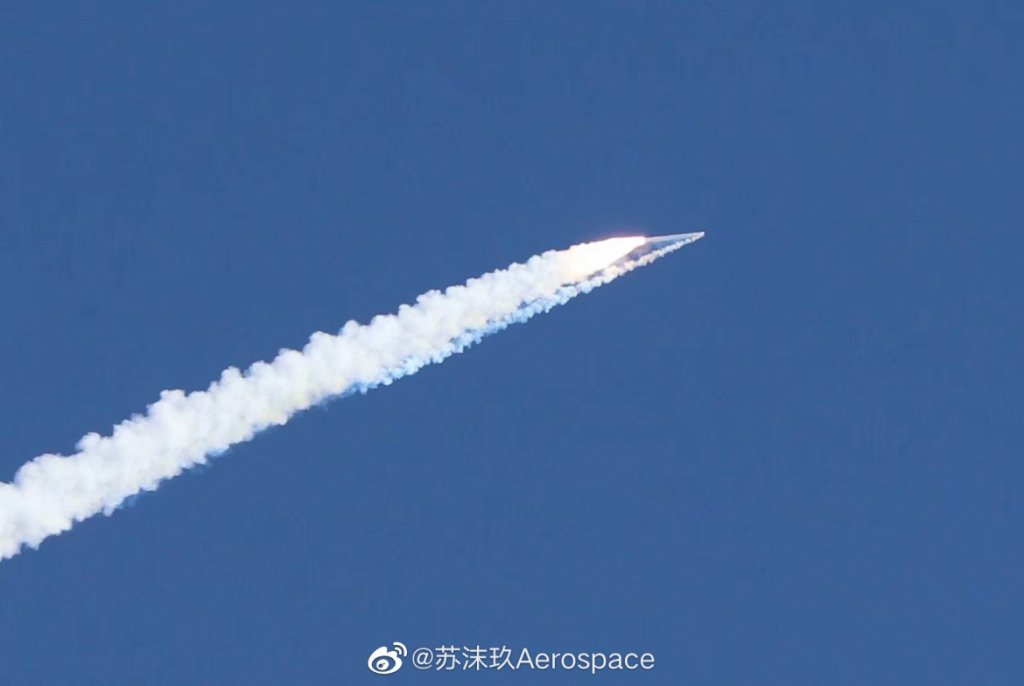Following a successful maiden flight, the Hyperbola-1 (aka SQX-1 – Shian Quxian-1) launch vehicle suffered a launch failure on its second flight from Jiuquan in China. It lifted off successfully at 0815 GMT on 1 February 2021. However, the four-stage solid rocket went out of control during the firing of its first stage, with the frontal part of the rocket apparently breaking up as smoke emanated from it and it failed to achieve orbit. The Hyperbola was developed by iSpace (China) – Beijing Interstellar Glory Space Technology Ltd. It is believed to be a more powerful version of the Hyperbola series, employing a new enlarged upper stage.
Update on 2 March 2021: An iSpace investigation revealed that the rocket had been damaged by a falling piece of foam insulation. While this had been intended to intended to fall off it apparently struck one of four grid fins at the base of the first stage. With its steering hampered the rocket had an unexpected turn and broke apart.
Update on 5 February 2021: There remains some mystery as to what satellites were aboard – up to six other payloads may have been carried.
Seradata initially reported that the Fangzhou 2 (aka Ark 2) 6U cubesat return capsule demonstration mission was aboard, but a later statement from the company – released on 1 February – clarified that its spacecraft was not on this flight. At one point it was thought there may have been two other payloads “Geesats 1 & 2” on the flight as these had been planned for a launch in late 2020. Seradata understands that these two 120 kg satellites (insured for circa US$15.5 million for the pair) were not on this flight and will fly on a KZ-1. One item that was on the failed Hyperbola-1 launch was a “dummy” payload in the form of an artwork called “The Book of Heaven” made by a Chinese artist.









